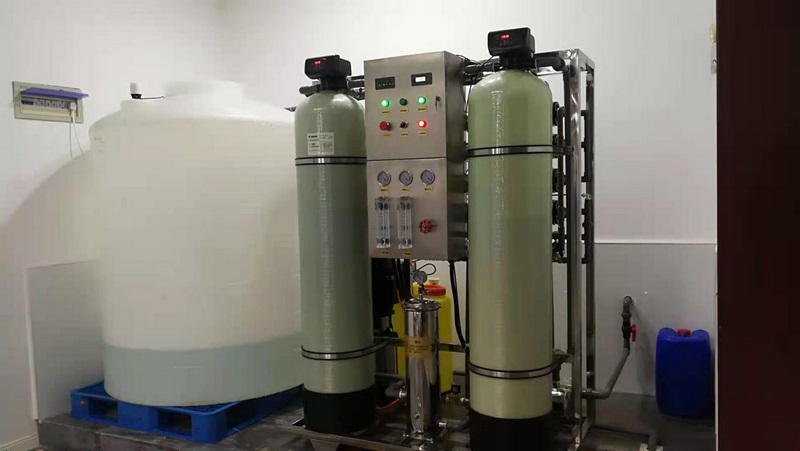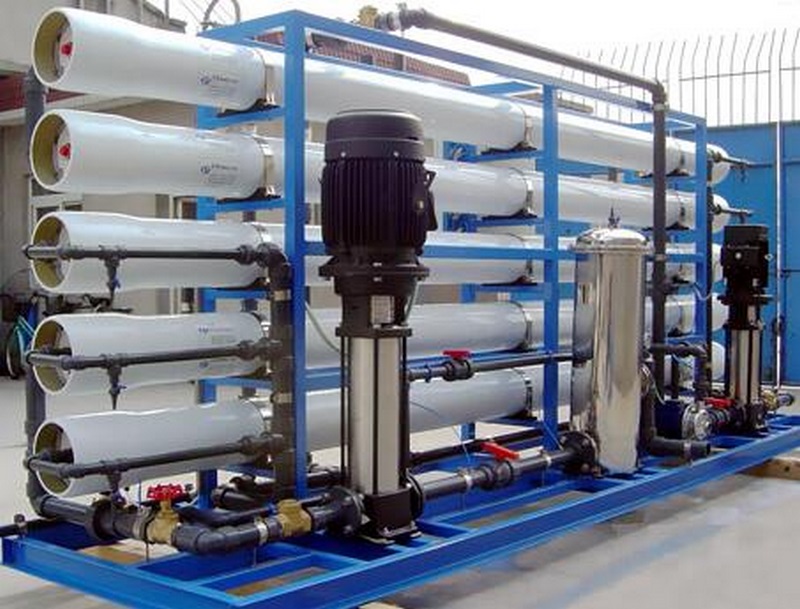 +86 15315361286
+86 15315361286
2021.07.05

Reverse osmosis membrane is the key equipment of reverse osmosis purification equipment. When the system runs continuously for a long time, calcium and magnesium ions in the water will continuously precipitate and adhere to the surface of the reverse osmosis membrane, forming scale and blocking membrane holes, which will affect the efficiency of the reverse osmosis purified water purification equipment. Damages the reverse osmosis membrane. Since reverse osmosis membranes are relatively expensive, a quantitative system should be added during system operation, and reverse osmosis water scale inhibitors should be added to the water to delay calcium and magnesium ions precipitation and membrane surface scaling.

1.Characteristics of scale inhibitor added to reverse osmosis purified water equipment:
①Effectively control inorganic dirt within a large concentration range.
②Do not condense with iron alumina and silicon compounds to form insoluble matter.
③It can effectively control the polymerization and deposition of silicon, and the concentration of SiO2 in the concentrated water side can reach 290ppm.
④Can be used for reverse osmosis CA and TFC membrane, nanofiltration membrane, an ultrafiltration membrane.
⑤Good solubility and stability.
⑥The pH value of water supply is effective in the range of 5-10
2. Basic functions of scale inhibitor:
① Complexation and solubilization: After the reverse osmosis scale inhibitor dissolves in water, it ionizes to form a negatively charged molecular chain, and forms a water-soluble complex or chelation with CA2, thus increasing the solubility of inorganic salts and playing the role of scale inhibition.
② Lattice distortion effect: Some functional groups in the reverse osmosis scale inhibitor molecules occupy a certain position on the crystal nucleus or microcrystals of inorganic salts, which hinders and destroys the normal growth of inorganic salts, slows down the growth rate of crystals, and thus reduces the formation of salt scale.
③ Electrostatic repulsion: Reverse osmosis scale inhibitor is dissolved in water and adsorbed on the crystals of inorganic salts, which increases the repulsive force between particles, hinders the agglomeration of particles, and keeps them in a good dispersion state, thus preventing or reducing the formation of scale.
④ Reverse osmosis scale inhibitor is used to improve the performance of reverse osmosis and nanofiltration systems.
⑤ Scale inhibitors and dispersants are a series of chemical reagents used to prevent the precipitation and scaling of crystalline mineral salts.
3. Function of scale inhibitor:
① Precipitation prevention function: In the system with scale inhibitor, the ionic product value of the anions, cations, and anions of the easy scaling component at the beginning of precipitation is much larger than the critical precipitation ion product value without a scale inhibitor.
②Dispersion function: When there is a scale inhibitor, the precipitated particles are smaller than those without scale inhibitors, because their particle size is smaller.
③ Lattice deformation effect: The crystal precipitated in the system containing scale inhibitor is spherical, polyhedral, and snowflake. It is generally believed that in the process of crystal growth, the scale inhibitor is adsorbed on the crystal growth point, which makes the growth rate of the surface decrease sharply, and the crystal with different shapes is grown.
④ Low limit effect: The amount of scale inhibitor is much lower than the amount of scale inhibitor in water, but it can also show the scale inhibition effect